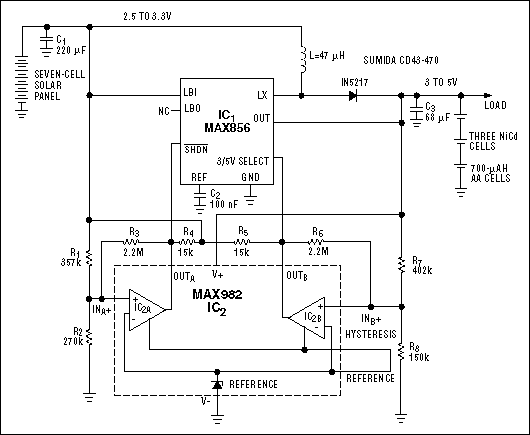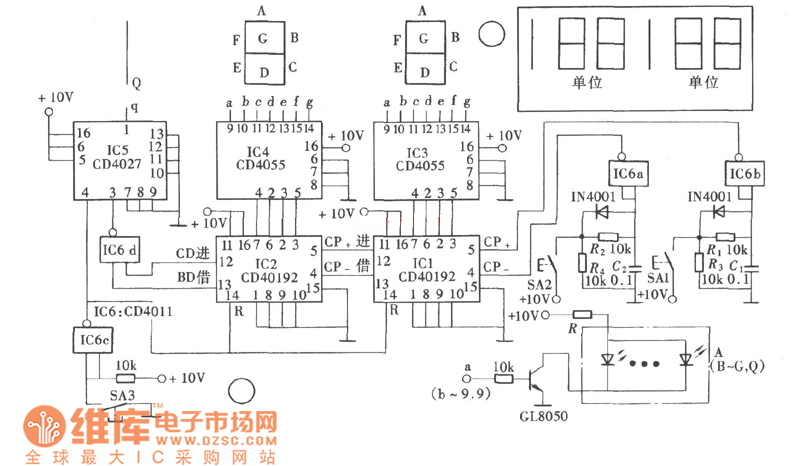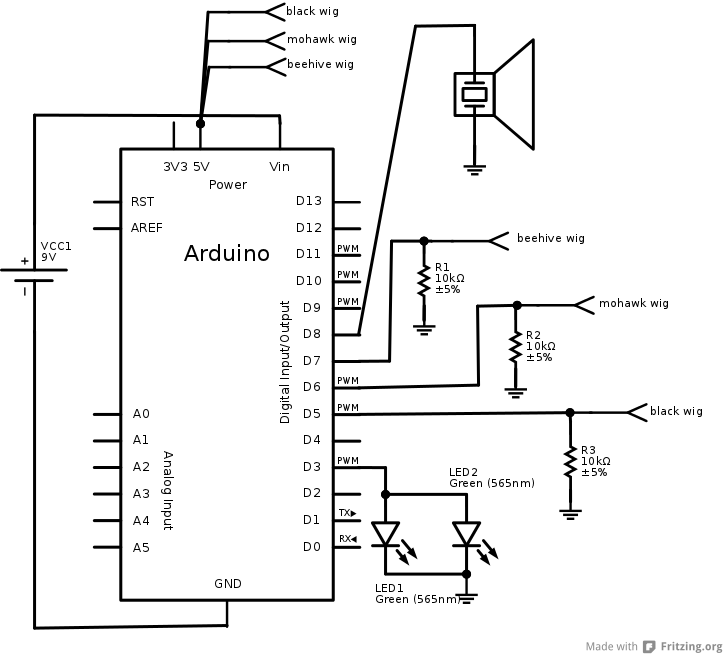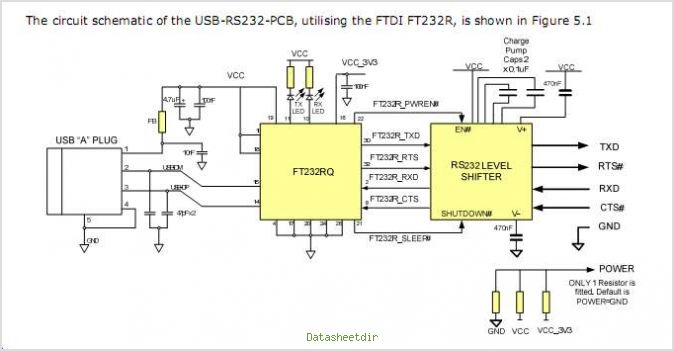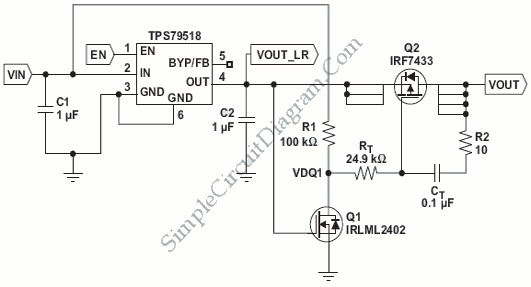
Ferrofluid Art Display
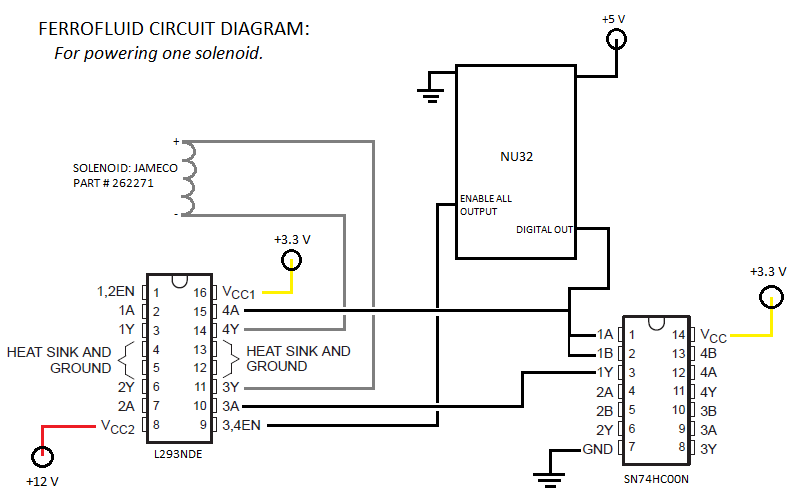
Several milliliters of ferrofluid exhibit acute normal-field instability due to the magnetic field created by a neodymium iron boron magnet positioned beneath a cup. The objective of this project was to develop a visually appealing and mathematically intriguing art installation utilizing a special type of magnetically sensitive fluid known as ferrofluid. The project drew inspiration from the work of two Japanese researchers-turned-artists, Sachiko Kodama and Yasushi Miyajima, whose recent creation, Morpho Towers, employs the magnetic properties of ferrofluids to visualize complex waveforms in three dimensions. The aim was to replicate this effect while adding an additional level of control. To achieve this, a housing was designed to contain 19 individually addressable solenoids arranged in a symmetrical hexagonal array, with small neodymium-iron-boron magnets mounted to the shafts of each electromechanical element. With the assistance of specialized circuits and custom-written software running on the NU32 PIC, the goal was to bring all 19 elements under computerized control via a graphical user interface on a laboratory PC. Through this interface, a user or another software could actuate the solenoids up and down, modifying the shape of the fluid's surface by varying the strength of the magnetic field normal to it. A video demonstration of the fluid in action is available. Like all large projects, this art display underwent several stages of design evolution before arriving at its final form. Each stage featured a specific physical design, each with its own advantages and disadvantages. Over time, the designs evolved to accommodate updates in direction, utilize newly acquired supplies or materials, or address unforeseen difficulties or errors. From the outset, the incorporation of symmetry into the final display piece was a priority. The intention was to avoid asymmetrical magnetic fields, which could complicate construction and detract from aesthetic appeal. Initial brainstorming sessions considered the use of a large electromagnet, similar to Morpho Towers, housed within a geometrically complex cone of iron, as well as a series of basic geometric shapes for an array of magnets. Specific material requirements posed challenges, as constructing a visually interesting design would necessitate a large conical piece of iron with multiple points of high curvature, which is difficult to machine and rare to find. The decision to pursue the array of magnets concept was made after weighing the pros and cons of each idea. A circular array was initially favored for its aesthetic symmetry and simplicity in display behavior through polar coordinates. However, the design evolved into a hexagonal array to save time and reduce the number of components needed for symmetry, as well as to lessen the current draw, which had become a concern after reaching nearly 9 amps during testing.
The project utilizes a sophisticated arrangement of solenoids and magnets to manipulate the ferrofluid's surface dynamically. Each solenoid is actuated individually, allowing for precise control over the magnetic fields affecting the ferrofluid. The hexagonal configuration of the solenoids not only enhances the aesthetic quality of the installation but also optimizes the magnetic field distribution, providing a more uniform interaction with the ferrofluid.
The use of neodymium iron boron magnets ensures a strong magnetic field, essential for achieving the desired effects in the ferrofluid. The solenoids are controlled via a microcontroller, which interfaces with a computer through a graphical user interface. This allows for real-time adjustments and the ability to program complex patterns or sequences of movements. The software developed for this project is capable of generating waveforms that can be visualized through the ferrofluid, creating a captivating display that responds to user input or pre-defined algorithms.
In addition to the aesthetic considerations, the design process involved careful calculations to ensure the system's electrical requirements were met without exceeding safe operational limits. The transition from a circular to a hexagonal array reflects a commitment to both functionality and visual appeal, demonstrating an understanding of the interplay between form and performance in electronic art installations. The final installation stands as a testament to the integration of art and engineering, showcasing the potential of ferrofluids as a medium for artistic expression.Several milliliters of ferrofluid exhibiting acute normal-field instability due to the magnetic field created by a neodymium iron boron magnet beneath the cup The goal of this project was to create a visually appealing and mathematically interesting art installation using a special kind of magnetically sensitive fluid called a ferrofluid. The pro ject was inspired by the work of two Japanese researchers-turned-artists, Sachiko Kodama and Yasushi Miyajima, whose most recent creation, Morpho Towers, uses the magnetic properties of ferrofluids to visualize complex waveforms in three dimensions. Wanting to replicate the same effect, but include an additional level of control, we designed a housing that contained 19 individually addressable solenoids arranged in a symmetrical heaxgonal array, and mounted small neodymium-iron-boride magnets to the shafts of each electromechanical element.
Then, with the help of a few specialized circuits and some custom-written software running on the NU32 PIC, it was our hope to bring all 19 elements under computerized control via a graphical user interface running on a laboratory PC. Through this interface, a user, or another piece of software, could actuate the solenoids up and down, altering the shape of the fluid`s surface by changing the strength of the magnetic field normal to it.
A video of the fluid in action can be seen here. Like all large projects, our art display underwent several stages of design evolution before settling into its final form. Each stage was marked by a specific physical design, with each design possessing its own advantages and disadvantages.
As time went on, the designs changed to accommodate an update in our direction, to take advantage of newly acquired supplies or materials, or to overcome unanticipated difficulties or errors. We knew from the beginning that we wanted to incorporate the concept of symmetry into our final display piece.
We were eager to avoid asymmetrical magnetic fields because we knew that, theoretically, they would be difficult to construct without increasing the cost and complexity of our proposal, and that they would be less aesthetically pleasing (by our own subjective judgment) than symmetrical ones. In our first brainstorming session, we explored the possibility of using one very large electromagnet (a la Morpho Towers) and an equally large geometrically complex cone of iron to house the magnet in as well as a series of several basic geometric shapes for an array of magnets.
Very specific material requirements (would require a large conic chunk of iron (heavy) with multiple points possessing high degrees of curvature (difficult to lathe, rare to find) in order to create anything more visually interesting than a simple blob) More elements yields more control (individually actuating each element would give us a greater degree of control over the magnetic field normal to the fluid surface thus possibly resulting in more interesting fluid shapes) After spending some time weighing the pro`s and con`s of each idea listed above, we ultimately decided to pursue our array of magnets concept. We decided that a circular array would yield the most aesthetically pleasing forms of symmetry, and would afford us the opportunity to simplify some of our display behavior ideas by incorporating polar coordinates.
Pattern display flexibility (we could display patterns radially, rotate them about a central axis, or display them in standard (x, y) coordinates with great ease) Once our milestone had passed, we decided to slightly alter our array`s design, changing its shape from a circle to a hexagon. We reasoned that this would allow us to not only save time by reducing the number of components necessary to maintain a reasonable degree of symmetry, but also reduce the amount of current required to power our display (drawing close to 9 amps became a real concern after we drew just less than a third of t
🔗 External reference
The project utilizes a sophisticated arrangement of solenoids and magnets to manipulate the ferrofluid's surface dynamically. Each solenoid is actuated individually, allowing for precise control over the magnetic fields affecting the ferrofluid. The hexagonal configuration of the solenoids not only enhances the aesthetic quality of the installation but also optimizes the magnetic field distribution, providing a more uniform interaction with the ferrofluid.
The use of neodymium iron boron magnets ensures a strong magnetic field, essential for achieving the desired effects in the ferrofluid. The solenoids are controlled via a microcontroller, which interfaces with a computer through a graphical user interface. This allows for real-time adjustments and the ability to program complex patterns or sequences of movements. The software developed for this project is capable of generating waveforms that can be visualized through the ferrofluid, creating a captivating display that responds to user input or pre-defined algorithms.
In addition to the aesthetic considerations, the design process involved careful calculations to ensure the system's electrical requirements were met without exceeding safe operational limits. The transition from a circular to a hexagonal array reflects a commitment to both functionality and visual appeal, demonstrating an understanding of the interplay between form and performance in electronic art installations. The final installation stands as a testament to the integration of art and engineering, showcasing the potential of ferrofluids as a medium for artistic expression.Several milliliters of ferrofluid exhibiting acute normal-field instability due to the magnetic field created by a neodymium iron boron magnet beneath the cup The goal of this project was to create a visually appealing and mathematically interesting art installation using a special kind of magnetically sensitive fluid called a ferrofluid. The pro ject was inspired by the work of two Japanese researchers-turned-artists, Sachiko Kodama and Yasushi Miyajima, whose most recent creation, Morpho Towers, uses the magnetic properties of ferrofluids to visualize complex waveforms in three dimensions. Wanting to replicate the same effect, but include an additional level of control, we designed a housing that contained 19 individually addressable solenoids arranged in a symmetrical heaxgonal array, and mounted small neodymium-iron-boride magnets to the shafts of each electromechanical element.
Then, with the help of a few specialized circuits and some custom-written software running on the NU32 PIC, it was our hope to bring all 19 elements under computerized control via a graphical user interface running on a laboratory PC. Through this interface, a user, or another piece of software, could actuate the solenoids up and down, altering the shape of the fluid`s surface by changing the strength of the magnetic field normal to it.
A video of the fluid in action can be seen here. Like all large projects, our art display underwent several stages of design evolution before settling into its final form. Each stage was marked by a specific physical design, with each design possessing its own advantages and disadvantages.
As time went on, the designs changed to accommodate an update in our direction, to take advantage of newly acquired supplies or materials, or to overcome unanticipated difficulties or errors. We knew from the beginning that we wanted to incorporate the concept of symmetry into our final display piece.
We were eager to avoid asymmetrical magnetic fields because we knew that, theoretically, they would be difficult to construct without increasing the cost and complexity of our proposal, and that they would be less aesthetically pleasing (by our own subjective judgment) than symmetrical ones. In our first brainstorming session, we explored the possibility of using one very large electromagnet (a la Morpho Towers) and an equally large geometrically complex cone of iron to house the magnet in as well as a series of several basic geometric shapes for an array of magnets.
Very specific material requirements (would require a large conic chunk of iron (heavy) with multiple points possessing high degrees of curvature (difficult to lathe, rare to find) in order to create anything more visually interesting than a simple blob) More elements yields more control (individually actuating each element would give us a greater degree of control over the magnetic field normal to the fluid surface thus possibly resulting in more interesting fluid shapes) After spending some time weighing the pro`s and con`s of each idea listed above, we ultimately decided to pursue our array of magnets concept. We decided that a circular array would yield the most aesthetically pleasing forms of symmetry, and would afford us the opportunity to simplify some of our display behavior ideas by incorporating polar coordinates.
Pattern display flexibility (we could display patterns radially, rotate them about a central axis, or display them in standard (x, y) coordinates with great ease) Once our milestone had passed, we decided to slightly alter our array`s design, changing its shape from a circle to a hexagon. We reasoned that this would allow us to not only save time by reducing the number of components necessary to maintain a reasonable degree of symmetry, but also reduce the amount of current required to power our display (drawing close to 9 amps became a real concern after we drew just less than a third of t
🔗 External reference
Warning: include(partials/cookie-banner.php): Failed to open stream: Permission denied in /var/www/html/nextgr/view-circuit.php on line 713
Warning: include(): Failed opening 'partials/cookie-banner.php' for inclusion (include_path='.:/usr/share/php') in /var/www/html/nextgr/view-circuit.php on line 713
